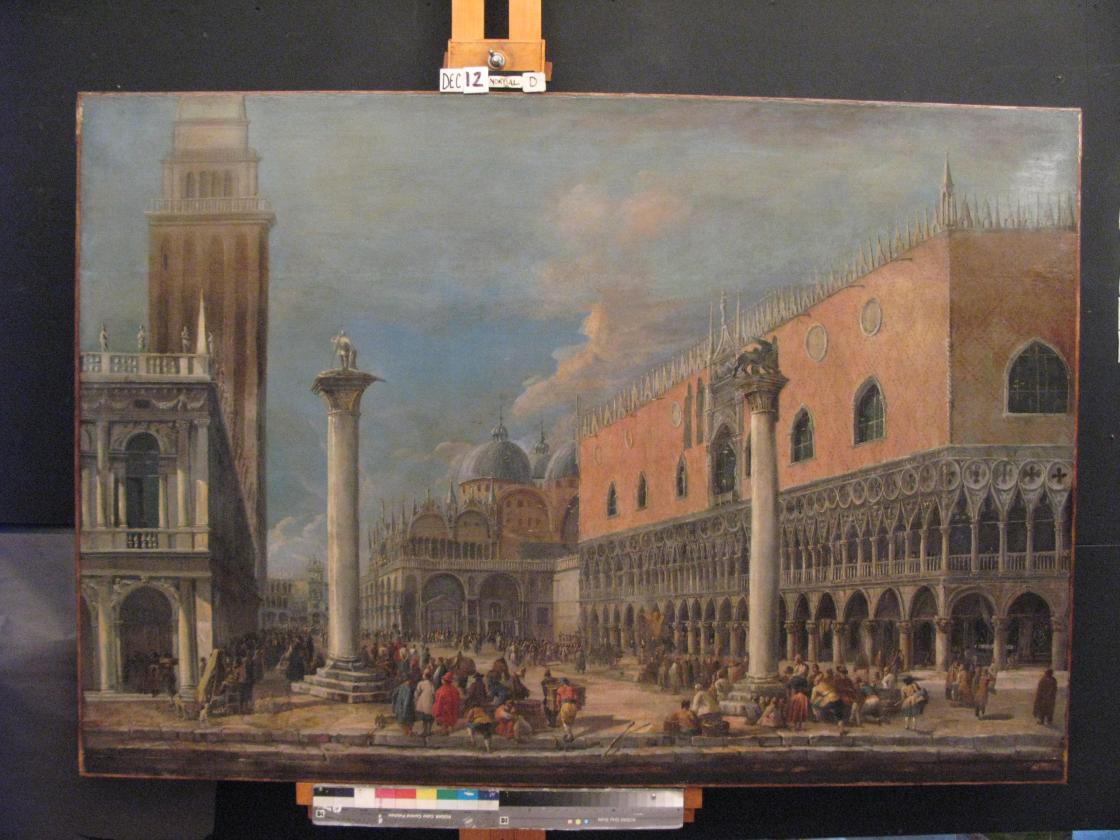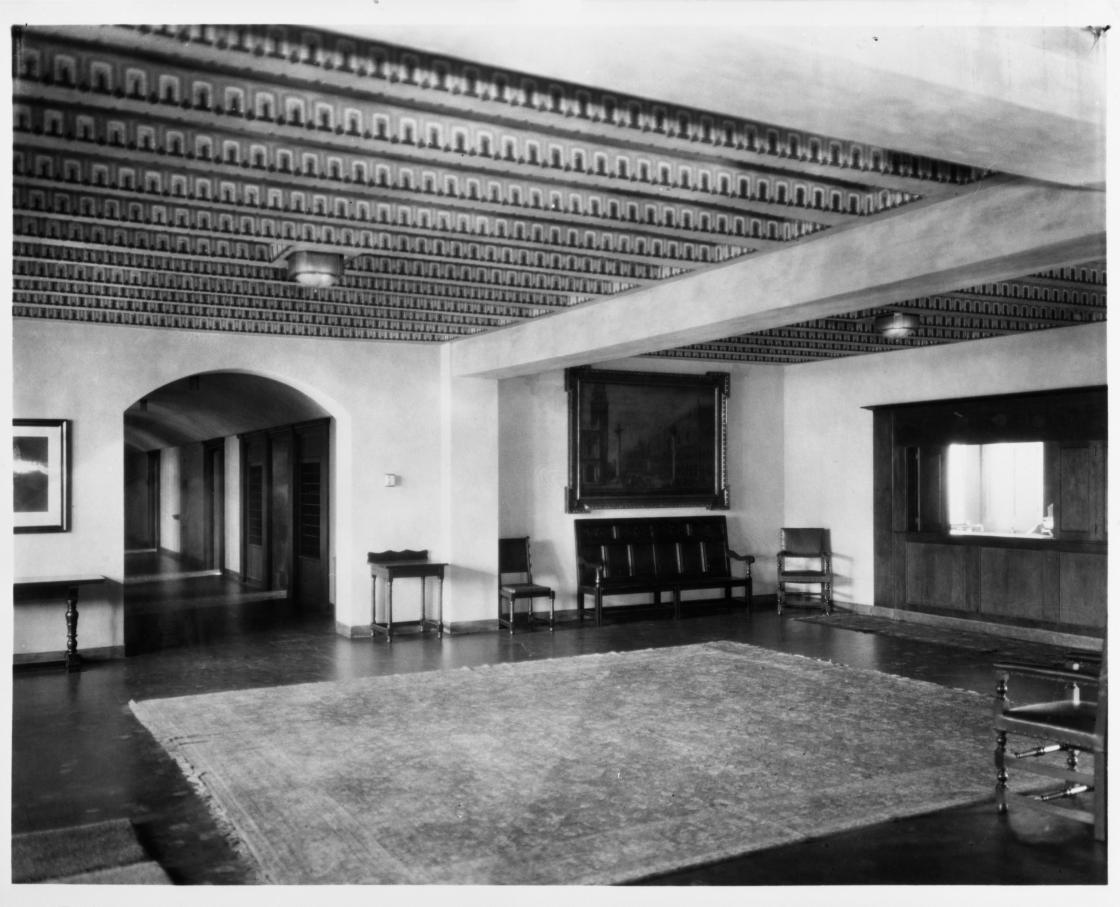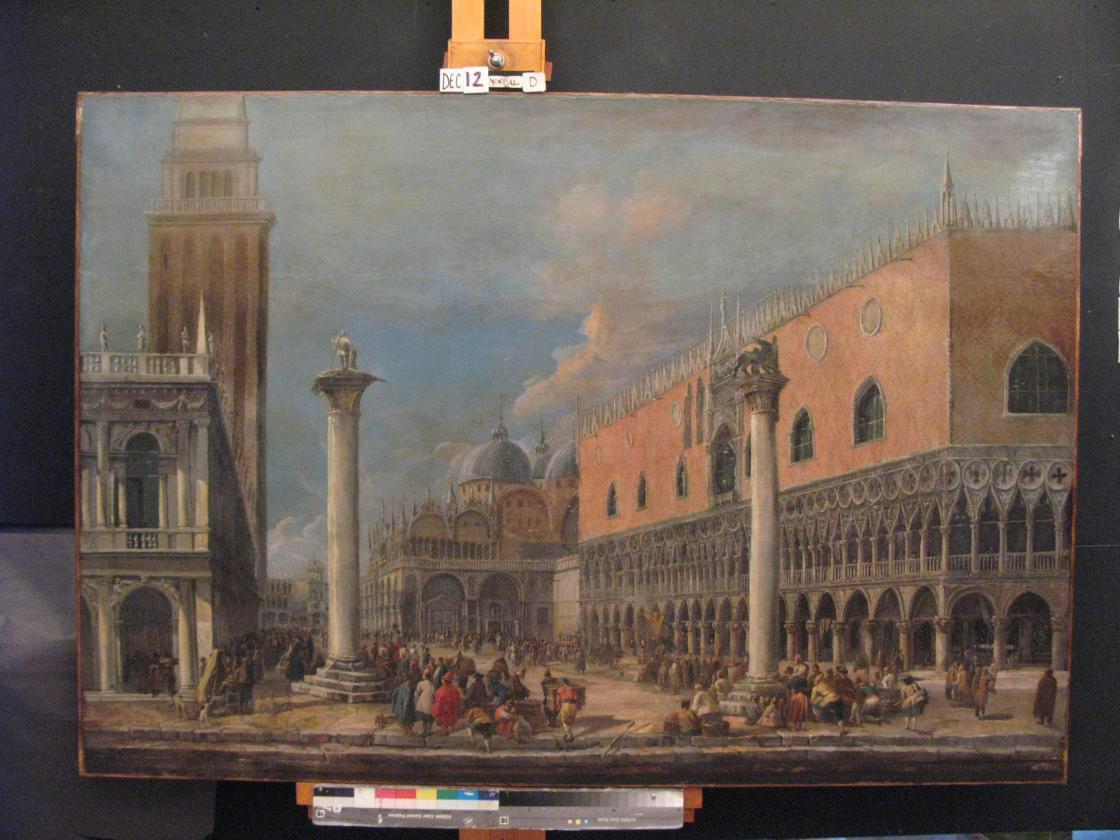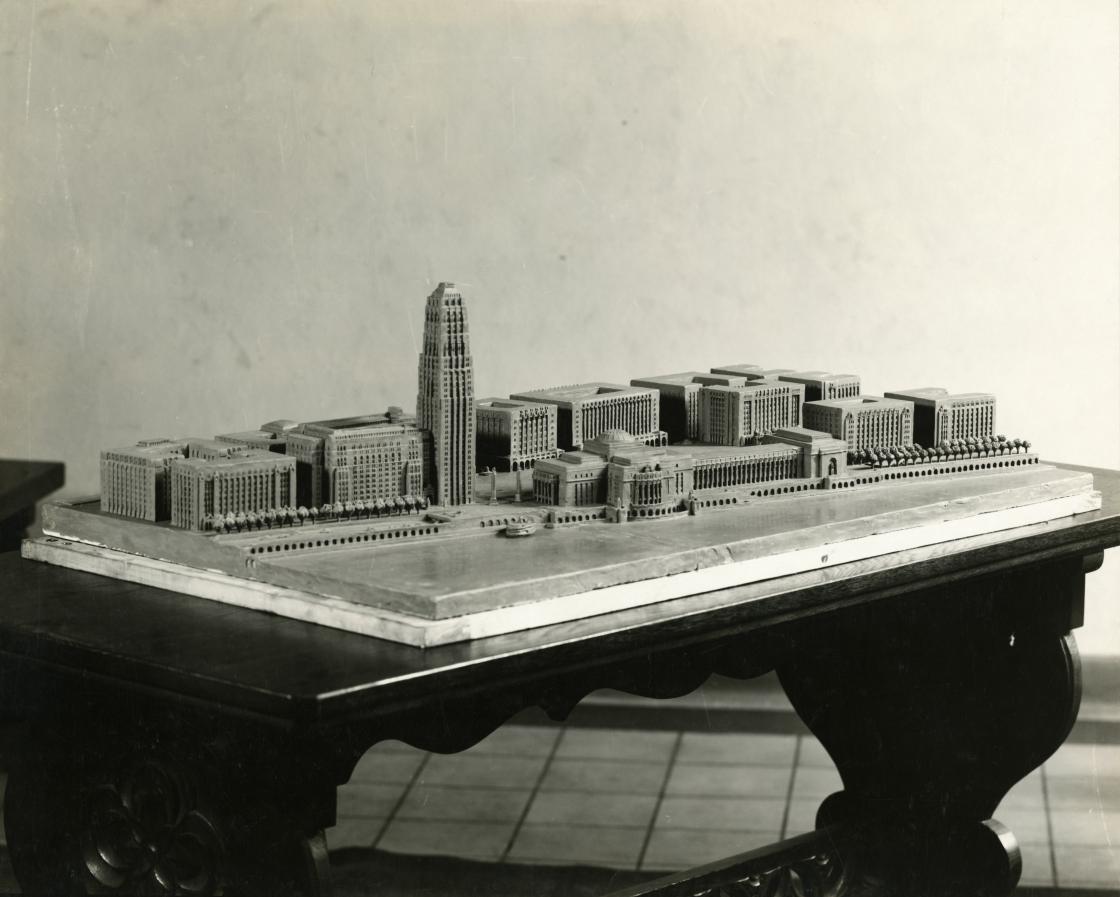The Piazzetta, Venice
Early 18th century
Oil on canvas (Framed: 66-1/2 x 90-1/2 inches)
Luca Carlevarijs (Artist)
Born 1663, Udine, Italy; died 1730, Venice, Italy
Cranbrook Center for Collections and Research, Cultural Properties Collection, Cranbrook School (CS 9)
Gift of George Gough Booth, 1926
2013 Conservation Supported by Cranbrook Kingswood Senior Classes, 2000 – 2012

Luca Carlevarijs, The Piazzetta, Venice, early 18th Century. Photography by Conservation & Museum Services Inc.; Courtesy Cranbrook Center for Collections and Research.
Luca Carlevarijs was the first of many Venetian scene painters, a documentarian of historical events and a painter of city views for sale to tourists. In 1926, the year before the dedication of Cranbrook School for Boys, Cranbrook founder George G. Booth purchased Cranbrook’s majestic painting by Carlevarijs, The Piazzetta, Venice, for the new Academic Building. The painting’s recent restoration, completed in 2013 thanks to Cranbrook Kingswood School’s Classes of 2000 to 2012, not only returns the painting to active duty—enhanced with a new lamp and its own plaque—but also allows us to more clearly see the special meaning it had for George Booth and it provides a key to his original aspirations for Cranbrook School for Boys.

Eliel Saarinen (Architect), Cranbrook School for Boys, Hoey Hall, South Lobby. Photography from the Detroit News, 1927; Photograph Collection of Cranbrook Archives (CEC3680).
The Cranbrook painting of the entrance to St. Mark’s Square, as seen from the Grand Canal, is typical of the artist’s large paintings. In this one he depicts the Doge’s Palace on the right in line with St. Mark’s Cathedral behind it, the twin columns as pedestals for the Lion of Venice and for St. Theodore in the foreground, and on the left the Sansovino Library in line with the Campanile behind it. The social scene appears to be a typical market day in the square.

Luca Carlevarijs, The Piazzetta, Venice, early 18th Century. Photography by Conservation & Museum Services Inc.; Courtesy Cranbrook Center for Collections and Research.
St Mark’s Square played a significant role in creating the bond between George Booth and Finnish architect Eliel Saarinen. At the time he began teaching at the University of Michigan in 1923, Eliel Saarinen was asked by the Michigan Chapter of the American Institute of Architects to design a much-desired memorial building for Detroit. George Booth and architect Albert Kahn put up half of the money for this commission. Eliel Saarinen devised a plan based on St. Mark’s Square, complete with a monumental building like St. Mark’s Cathedral, a tall building like the Campanile, and twin columns on the riverside, a motif familiar to many whether travelers or not. Unveiled in late June 1924 in The Detroit News, Eliel Saarinen’s sensational drawings and plan also addressed issues of traffic congestion, parking, and access to the river. In spite of its beauty and practicality, Eliel Saarinen’s idea was not taken up by the City.

Eliel Saarinen (Architect), Model of Proposed Detroit Riverfront Project, circa 1924. Photographer Unknown; Photograph Collection of Cranbrook Archives.
By the time Eliel Saarinen was invited to come to work at Cranbrook in 1925, he had provided George Booth with a model for a world-class Academy of Art for the Cranbrook property. In the meantime, however, George Booth’s decision to build Christ Church Cranbrook had advanced to the point where it interposed a new need for a church school. The Cranbrook School for Boys took its magnificent form once George Booth turned Eliel Saarinen’s attention to its plan and design. As a result, the Cranbrook School Quadrangle evoked the paradigm of St. Mark’s Square with low horizontal buildings punctuated by a tower, but this time there was an American inspiration, too, in the Midwestern form of low farm buildings, barn, and silo.

Eliel Saarinen (Architect), Cranbrook School for Boys, Quadrangle. Photographed by The Arnold Studio, circa 1928; Photograph Collection of Cranbrook Archives (CEC3879).
George Booth’s purchase of The Piazzetta, Venice for the main reception room of the South Lobby area was accompanied by an additional reference to St. Mark’s Square. By placing a copy of the porphyry stone carving of two (of four) Tetrarchs above and to the left of the main doorway to the South Lobby, he was making a reference to the original porphyry carving long embedded in the fabric of St. Mark’s Cathedral in Venice. In a final flourish late in November 1927, George Booth released white pigeons like those in St. Mark’s Square into the Quadrangle. The dovecote was replaced by Stevens Hall in 1928.

Eliel Saarinen (Architect), Cranbrook School for Boys, Tower and South Lobby Entrance. Photographed by Harvey Croze, July 8, 1966; Photograph Collection of Cranbrook Archives (CR3623-10b).
The Luca Carlevarijs painting, the Tetrarchs seeking an orderly succession of power, and the presence of the Gateway of Friendship carry themes of friendship and mutual emulation as creative spurs to excellence. George Booth and Eliel Saarinen worked together for twenty-six years to bring Cranbrook to extraordinary international fame. The Piazzetta, Venice is the silent sign and seal of their mutual and enduring commitment to a life fully lived.
Jeffrey Welch
Retired Faculty Member, Cranbrook Schools (1977 – 2015)
March 2019

Tetrarchs, Cranbrook School for Boys, South Lobby Entrance, carved porphryr stone. Photographed by Kevin Adkisson, April 2019; Photography Courtesy of Cranbrook Center for Collections and Research.
Banner photo by P.D. Rearick, CAA '10
